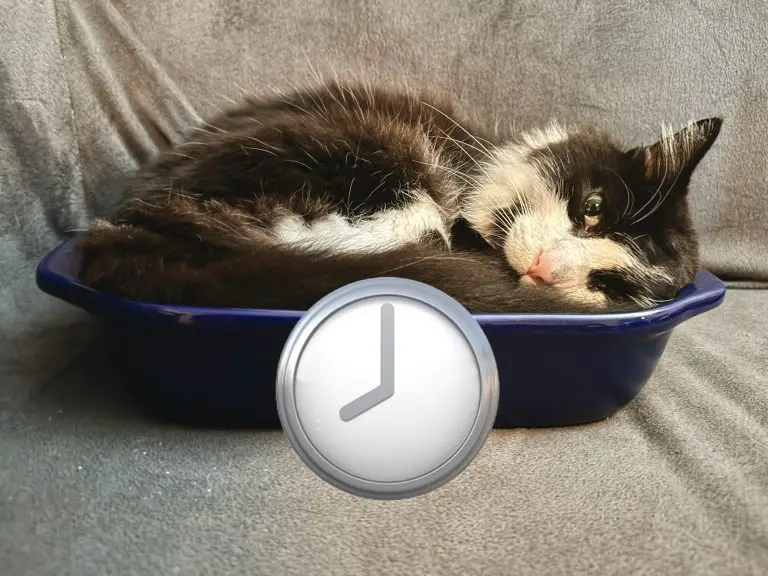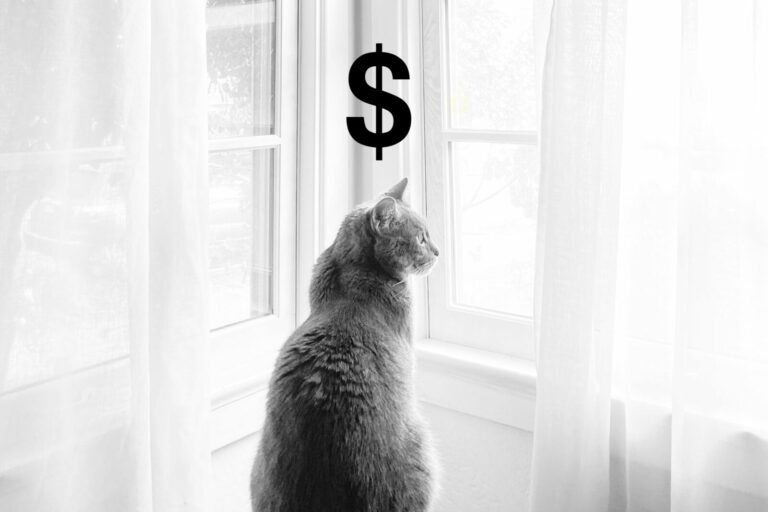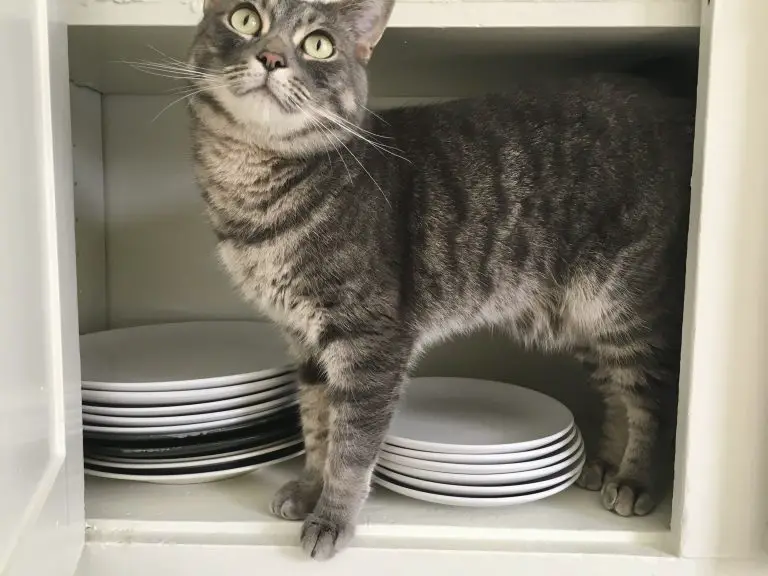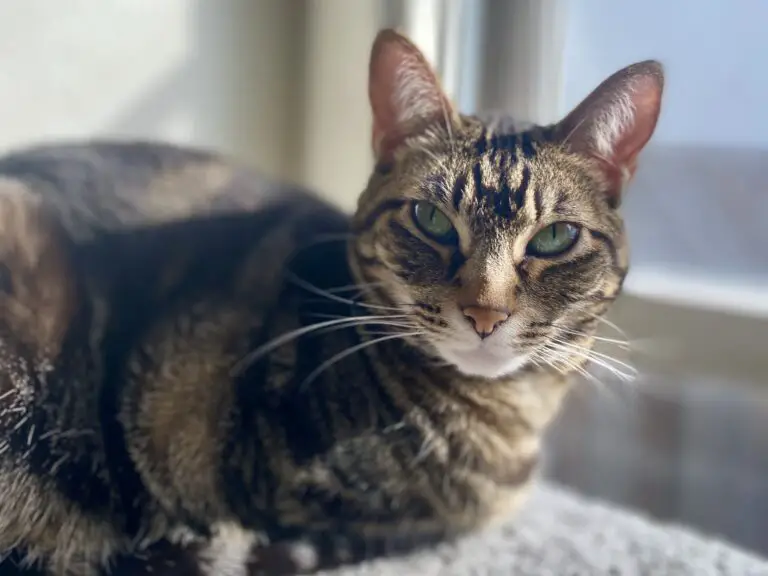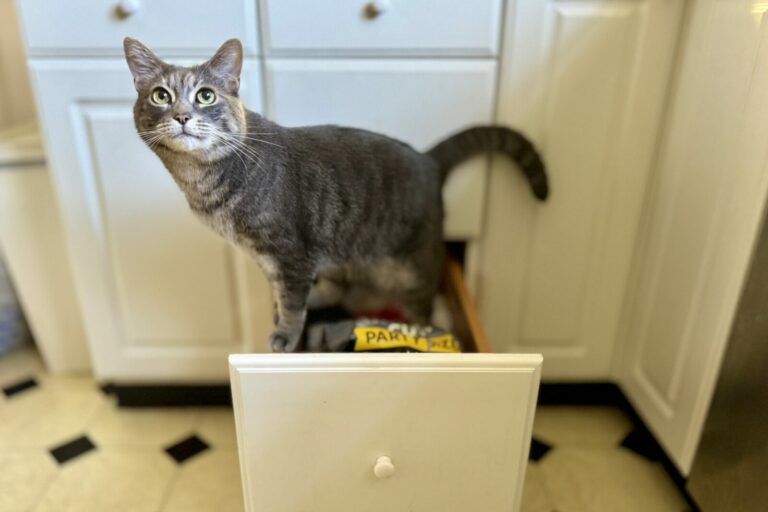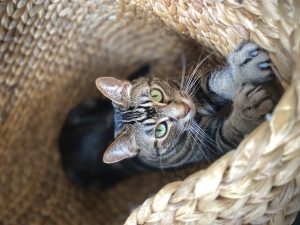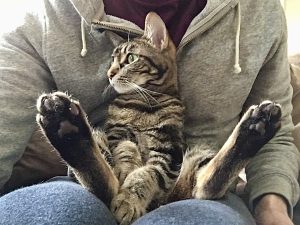It’s Not All Cuddles and Purrs – the Cons of Cat Ownership
Yes, cats are cute and we love it when they curl up on our laps or pounce on a toy. But having a cat comes with plenty of unpleasant things, too – messes, hazards, annoyances, and expenses – that you should be aware of if you’re thinking about adopting one soon.

This article is part of a series to help you make an informed decision about whether or not getting a cat is right for you.
We focus strictly on the disadvantages of having a cat in this article, but make sure you know about the many upsides of cat companionship as well.
1. Time Commitment
Having a cat requires that you make time for the chores and various responsibilities. It takes a minimum of 20 minutes per day to take care of the basic requirements of cat care.
2. Housing
Having a cat can make it harder to find a house or apartment to rent because many landlords unfortunately don’t allow cats or pets. I’ve experienced this challenge myself a few times, and it can be a real problem in competitive or hot rental markets.
3. Can Limit Time With Friends or Family With Cat Allergies
If you have friends or family members who are allergic to cat dander, they may not be able to hang out inside your house for very long.
I have one friend who is so allergic that he won’t spend any time inside my house, apart from using the bathroom. Sometimes, it bums me out that social gatherings at my home are limited in this way.
4. Travel Requires Additional Layer of Planning and Expense
When you have a cat, you may not be able to just spontaneously hit the road for the weekend. You need to arrange for someone to look in on your cat at least twice each day while you’re gone.
If you can’t find someone, you may need to board your cat, which can be stressful because cats don’t like sudden changes in scenery! And cat care arrangements often cost a minimum of $25-$30 per day.
5. General Expenses
Having a cat isn’t cheap. It typically takes at least $400 just to get started with a new cat. A typical monthly budget for one cat starts around $50 or $60, and can be much higher depending on what you buy and how much medical care your cat needs.
6. Shedding and Cat Hair Everywhere
Unless you have a hairless cat, you will have cat hair to deal with. This means you’ll probably be relying on your vacuum cleaner and broom more often than you otherwise might. You might also need to have a lint brush handy to remove the hair from your sweater.
7. Litter Box Maintenance
Perhaps most cat owners’ least favorite chore is scooping and cleaning the litter box. You are also likely to not enjoy this activity. But you must do it if you have a cat.
8. Unpleasant Odors
Although cats usually keep themselves quite clean, having one around does involve some stink factor.
This is mostly related to the litter box. This can be a problem when you don’t have a good place to keep it. For instance, some cat owners have no choice but to put the litter box in the bathroom, or near the kitchen.
Canned cat food also doesn’t smell great, in my opinion at least. But this is minor and usually only a brief daily experience.
Fun fact: feeding a raw diet often leads to practically odorless cat poop!
9. Scratching
Cats need to scratch something every day in order to maintain claw and paw health. This means they may scratch and damage things you don’t want them to scratch. Like your sofa or rug.
The good news is, there’s a lot you can do to help them scratch the right things (i.e., scratching posts). Plus, there are certain types of furniture material that cats are far less likely to scratch than others.
11. Hairballs
Most cats cough up hairballs from time to time. And it can happen on pretty much any horizontal surface in your home. Some cats are more prone to hairballs than others. Regular brushing can help keep this to a minimum.
12. Vet expenses
Annual routine checkups are a predictable expense, but you never know when your cat might get injured or develop a health issue that requires medical attention. Vet bills can add up. For that reason, some people choose to insure their cats.
13. Noise
Cats are generally pretty quiet pets to have around. But they can be vocal when they want attention or food.
And some cats can be very vocal and very persistent. My sister’s cat is a good example of this – he can really be a lot when he’s hungry.
Also, some cats learn quickly that meowing (and pawing) endlessly at your bedroom door is a great way of making breakfast happen in their food dish. I avoid this by closing my cats in their own space each night, but that’s not an option for everyone.
14. Damaged Stuff
As previously mentioned, cats can damage furniture by scratching. They also tend to get the “zoomies” once or twice each day, and you never know what they might knock over or pull to the floor when that happens. This is usually a great source of entertainment, but it does occasionally lead to messes.
Other sources of wear and tear can be hairballs or barf on the carpets, and litter box accidents.
15. Problematic Behaviors
Cats often require some training and problem-solving. Cats with a history of trauma can develop some aggressive behaviors, like biting or scratching when they feel threatened.
Problems also sometimes occur around litter box use. Occasionally, a cat may reject using the litter box for some reason. If this occurs, prompt trouble-shooting is required.
Those are a couple of the most common examples of behavior issues cat owners may have to deal with.
16. Clutter
Having a cat usually means your space is going to be perhaps a bit more cluttered than it might be otherwise. The main culprits are toys, scratchers, and food and litter box areas.
17. Long-Term Commitment
Finally, having a cat means you’re obligated to provide necessary and proper care for the entirety of the cat’s life – typically 15-20 years. Caring for an elderly cat can be more intensive – and expensive – than what it took in its younger years.
And of course it will probably be tremendously sad when your cat reaches the end of life. But it’s all part of the deal.
Last Meows
Now you have an idea of the potential downsides of having a cat. To be sure, the possibilities don’t end there.
As you can see, it’s not all purrs and snuggles. There are also plenty of annoyances and mishaps that are an inevitable part of having a cat.
The good news is, there are sooo many upsides of cat ownership that make it really great and totally worth it. Plus, there’s a lot you can do to prevent mishaps and address unwanted behaviors so that your journey in cat ownership has far more upside than down.
Bonus: Some Real-Life Examples of Mishaps and Misadventures of Cat Ownership
As a bonus, here is a non-exhaustive list of things that may or may not have happened with my own cats (ok, almost all of them happened with my own cats), and could happen with yours, too.
I share some of my own tales of cat ownership frustration and misfortune, not to scare you away from getting a cat, but so that you can go into it knowing the sorts of pitfalls you might experience along the way.
Don’t say you weren’t warned about what can go wrong 🙂
Be sure to explore the entire Verve Cat series about deciding whether or not having a cat is right for you.
